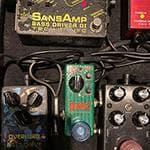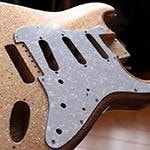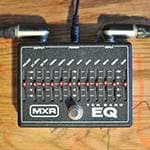Has everyone heard of Garigari-kun?
This ice pop is the front-runner in Japan's ice candy industry, and it’s a superstar with annual sales exceeding 400 million units.
In this story, I would like to talk about how surprisingly Garigari-kun can also be very helpful in improving your blues harp playing skills.
In my previous Harmonica Story, I believe I wrote that though it’s possible to produce chromatic notes on a blues harp, it's quite difficult, so it’s better not to try. However, I understand that people who love instruments tend to be the type who, when told not to do something, only become more determined.
Isn't it the same when you're updating your computer and it says, "Please do not turn off the power until it finishes"? Don’t you just feel the urge to turn it off? Yes, I’m talking to even you out there in the internet stratosphere.
For those who know I’m describing you, I’m going to introduce three ways to produce chromatic notes on a blues harp.
1. Mastering the Overblow
An overblow (or overdraw) is a technique where you blow (or draw) strongly on a specific hole, causing the reed on the opposite side to sound a pitch about a half-step higher than the original pitch. For example, the 4th hole normally plays C when blown and D when drawn, but by blowing harder, you can make it play ♯D.
This technique, which forces a reed to play a note it normally wouldn’t, is extraordinarily difficult and definitely not something you can master with half-hearted effort. However, if you’re still determined to try, it’s best to practice using the following steps.
① Buy a Garigari-kun
There’s no specific flavor to choose, but whatever you do, don’t try the new flavors. If you don’t like it, you won’t be able to move on to the next step.
② Eat the Garigari-kun
Once you buy it, eat it all at once. However, don’t throw away the stick. Yes, this stick (which we’ll now call the Garigari Stick) is necessary. If you’re unlucky enough to get a freebie in the form of a prize stick, you’ll have to say, “Man, I’m not having a good day,” and then go get another one to eat.
③ Brush your teeth
I’m not joking. Brushing your teeth is a very important routine for harmonica players. If you don’t brush your teeth before playing, food particles can get stuck in the reeds, preventing sound from coming out, and the acidic saliva will corrode the reeds.
④ Block the reed hole with the Garigari Stick
Insert the Garigari Stick into the gap between the upper cover and the reed plate of the blues harp, ensuring it blocks the desired reed hole firmly.
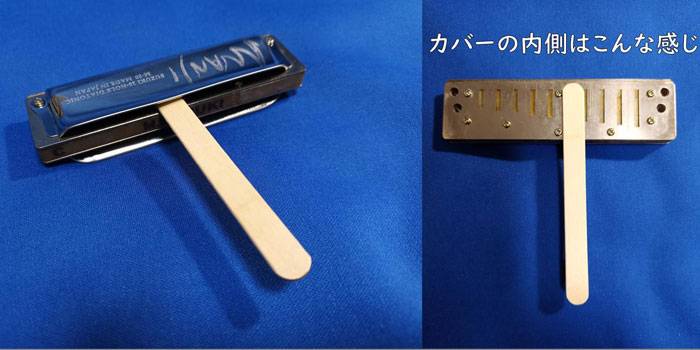
(Figure 1)
At this point, never insert the Garigari Stick into the bottom gap. The reed is attached to the outside of the body at the bottom, so if you insert the stick there, you’ll end up destroying the reed with a "grinding" sound.
⑤ Blow strongly into the desired hole and check the sound
The overblow technique is typically used with holes 1, 4, 5, and 6, producing the notes ♯D, ♯D, ♯F, and ♯A, respectively. However, you need to get a sense of what kind of sound will come out before you can aim in the right direction.
Start with hole 6. Use the Garigari Stick to block the reed hole, ensuring no sound comes out when you blow normally. Then, blow as hard as you can in that state. You should be surprised at how suddenly a loud sound comes out. That’s the overblow sound. Be cautious if there’s anyone nearby with a weak heart—you might scare the bejeezus out of them.
Once you hear the sound, experiment with different blowing strengths to get a feel for how to control the sound.
⑥ Mastering the Overblow
The time has come to challenge the overblow without relying on the Garigari-kun. First, check if you can do a blow bend. Blow sharply into hole 8, and if you can lower the note from E to D, you’re good to go. Using the same technique, try lowering the note from "G" in hole 6. However, due to the principle, the reed for G won’t go down, and the reed will stop sounding with a Well, that’s impossible!
At this point, blow again with a little more force, and amazingly, the A reed will sound about a half-step higher.
For those who find this explanation hard to understand, I recommend watching one of the top harmonica YouTubers, Makoto Yamaguchi’s instructional videos. Search "山口牧 オーバーブロー" to bring up clear videos, so be sure to check them out.
Also, for those who prefer to solve things with money, there are products available, which I’ll introduce here as well.
2. Modify by Adding a Valve
A blues harp has two reeds in each hole—one for blowing and one for drawing. When one reed sounds, the other reed that isn’t playing loses air and becomes empty.
So, what happens if you prevent that air from escaping, essentially blocking the unused reed with a valve? By doing this, even the lower reed can now bend.
For example, on hole 6, G and A normally allow bending only for A. But by adding a valve to the A reed, you can now bend G as well. This type of air valve is referred to in the industry as a valve.
By effectively utilizing this mechanism, it’s possible to produce all chromatic notes on a blues harp through bending. Specifically, you should attach valves to the backside of the reeds in hole no. 1 (bend), no. 2 (bend), no. 5 (bend), no. 6 (bend), no. 7 (blow), no. 8 (blow), and no. 10 (blow).
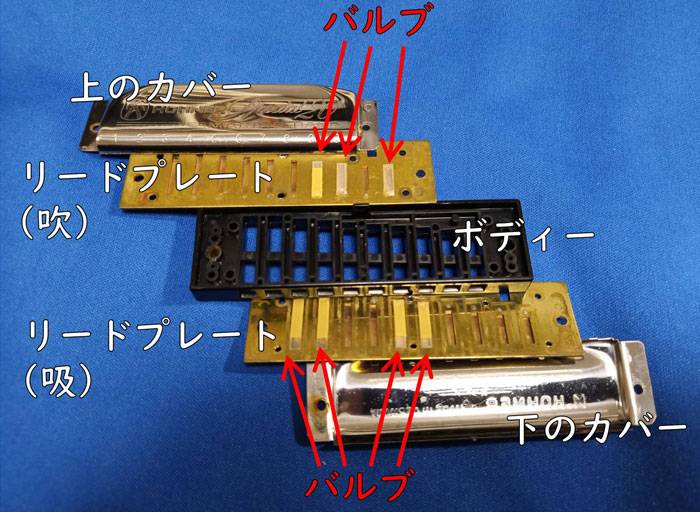
(Figure 2)
The valves shown in the diagram above are actually ones made for chromatic harmonicas. Because chromatic harmonicas are structurally prone to air leakage, nearly all of their reeds come equipped with valves, and you can also buy replacement valve sets. That said, you might be able to make a substitute by cutting the wrapper of a Garigari-kun into thin strips—it’s worth a try for those who are curious.
That’s the basic modification method. But, for those who would rather solve everything with money, here’s a ready-made option:
3. Apply special tuning
The reeds in a harmonica can be tuned by shaving them with a file. If you file the tip of the reed, the pitch becomes higher. If you file closer to the base, the pitch becomes lower. With this method, you can adjust the pitch by about a semitone, which is why alternate tunings that are similar to altered tunings on a guitar are often used.
A good example is Country Tuning, where the F note in hole 5 is tuned up to F♯.
Basically, if you tune the harmonica in such a way that all chromatic notes can be reached through bending, you're good to go.
Here’s one example of how you might tune it:
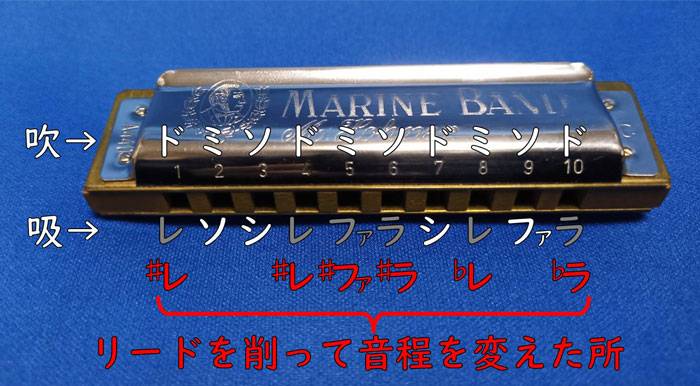
(Figure 3)
In this example, only the lower reeds are filed. Doing so allows you to modify them without removing the reed plate from the body.
Theoretically, this tuning should allow you to produce all chromatic notes, though achieving a blow bend on hole 10 might be a bit unrealistic.
Unlike the previous methods, there aren’t any conveniently available products for this approach. However, for those who are absolutely determined to solve everything with money, you might be able to request a custom order from Moridaira Instruments if you're dealing with harmonicas from TOMBO, SUZUKI, or HOHNER.
By the way, there’s also a type of custom tuning called Diminished Tuning that makes it possible to play all chromatic notes through bending.
But the note layout changes so drastically that it’s no longer really a blues harp, so we’ll skip over that this time.
Those are the three methods for producing chromatic notes on a blues harp.
I made this article a bit long, but if I were to sum it all up simply:
"Wouldn't it just be easier to use a chromatic harmonica?"
The “sound & person” column is made up of contributions from you.
For details about contributing, click here.





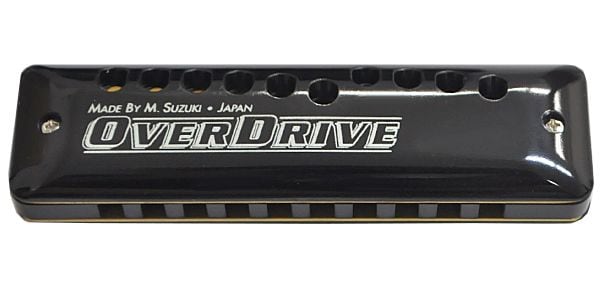
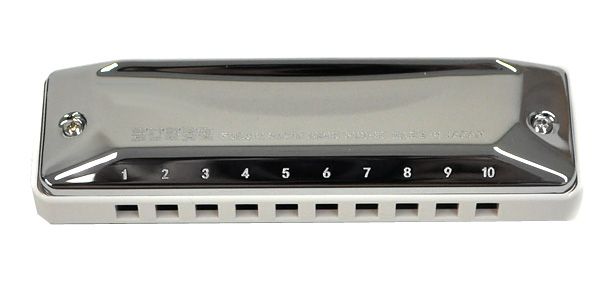



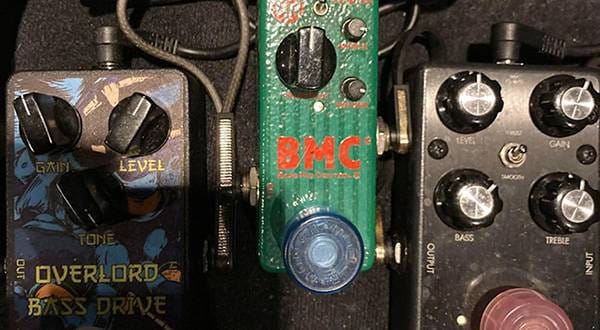
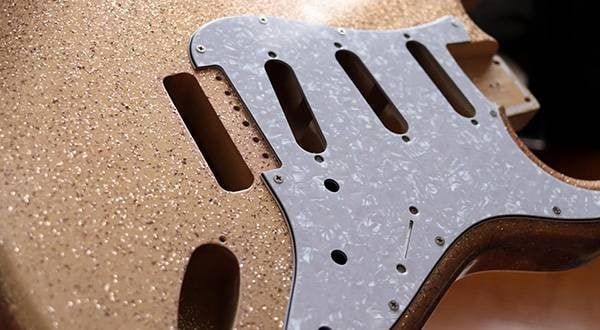
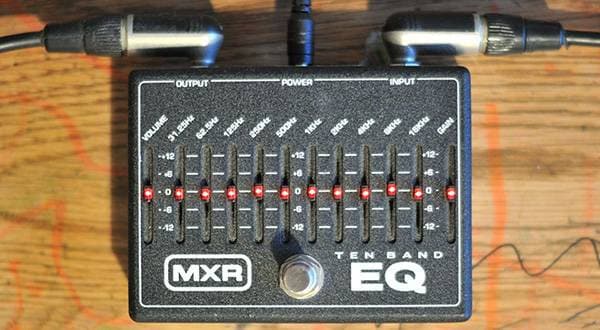
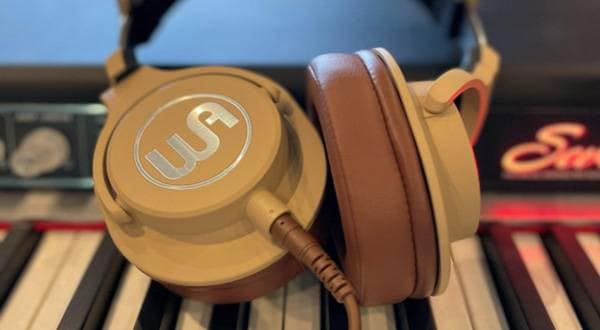

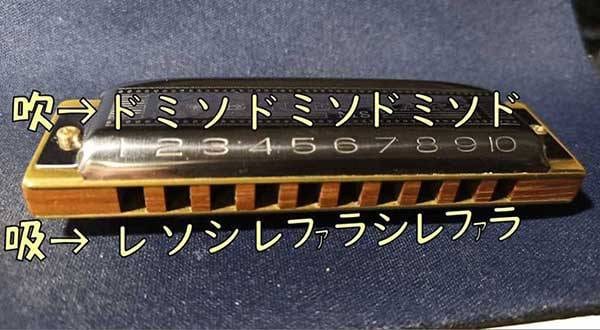
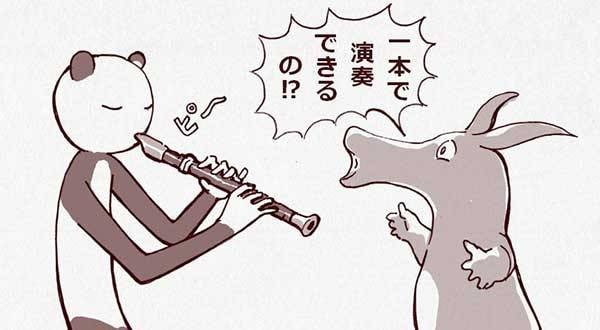
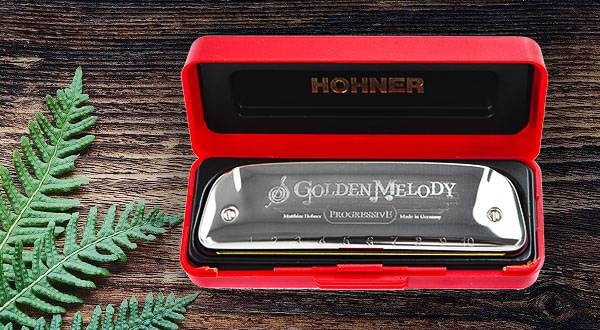
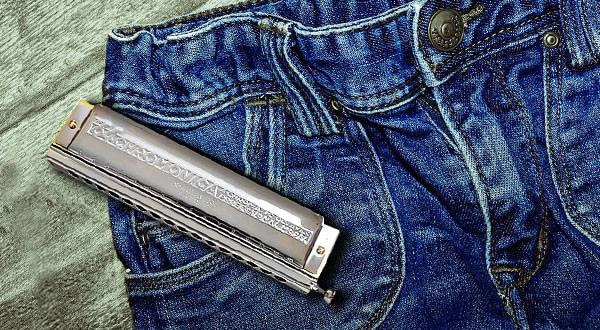
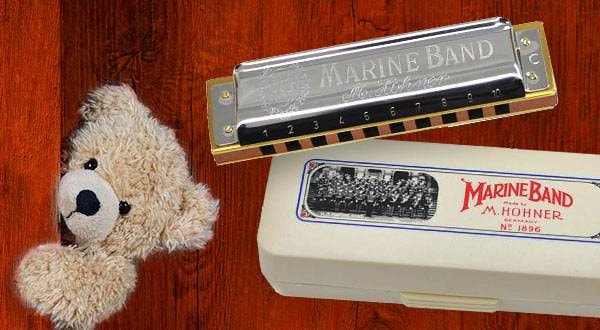

 お化けを倒してサウンドGET!
お化けを倒してサウンドGET!
 ライブ配信に必要な機材
ライブ配信に必要な機材
 バンドあるある相談
バンドあるある相談
 今こそ音楽を始めよう! I’m sound girl
今こそ音楽を始めよう! I’m sound girl
 サウンドハウス社員が選ぶ 『おもしろ商品』はコレだ!
サウンドハウス社員が選ぶ 『おもしろ商品』はコレだ!
 ○○やってみた!
○○やってみた!
